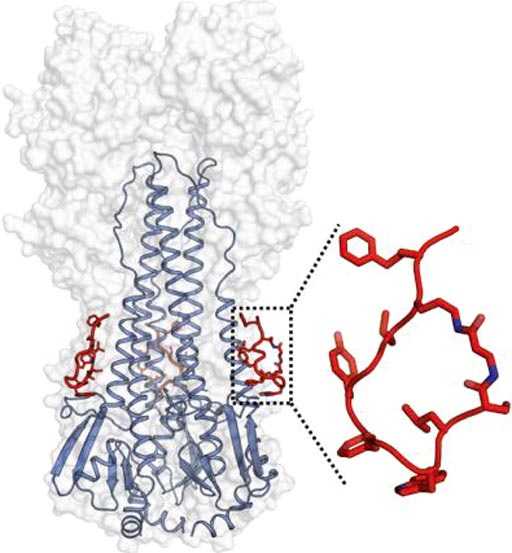Potential Peptide Drugs Block Influenza Virus Activity
By LabMedica International staff writers
Posted on 12 Oct 2017
A recent paper described the design and structural characterization of a class of potent peptide inhibitors specifically targeted to block the activity of influenza virus hemagglutinin.Posted on 12 Oct 2017
Influenza hemagglutinin (HA) is a glycoprotein found on the surface of influenza viruses. It is responsible for binding the virus to cells with sialic acid on the membranes, such as cells in the upper respiratory tract or erythrocytes. It is also responsible for the fusion of the viral envelope with the endosome membrane, after the pH has been reduced.

Image: A model of a potent peptide that targets influenza virus hemagglutinin and mimics the functionality of a broadly neutralizing antibody (Photo courtesy of Rameshwar U. Kadam, Ian Wilson\'s Laboratory, The Scripps Research Institute).
Influenza therapeutics with new targets and mechanisms of action are urgently needed to combat potential new pandemics, emerging viruses, and constantly mutating circulating strains. Towards this end, investigators at The Scripps Research Institute (La Jolla, CA, USA) and Janssen Research & Development (Beerse, Belgium) designed and characterized a class of potent peptide inhibitors against influenza HA. The peptide design was based on complementarity determining region (CDR) loops of anti-HA human broadly neutralizing antibodies, FI6v3 and CR9114.
The peptide design incorporated amino-acid building blocks not found in natural proteins, and this, as well as their cyclic structures, rendered them relatively resistant to enzymes that quickly clear peptide compounds from the bloodstream.
Results published in the September 28, 2017, online edition of the journal Science revealed that the optimized peptides exhibited nanomolar affinity and neutralization against group 1 influenza A viruses including the 2009 H1N1 pandemic and avian H5N1 strains. The peptide inhibitors were found to bind to the highly conserved stem epitope and blocked the low pH-induced conformational rearrangements associated with membrane fusion.
"Making small molecules that do essentially what these larger, broadly neutralizing antibodies do is a really exciting and promising strategy against influenza, as our new results show," said senior author Dr. Ian Wilson, professor of structural biology at The Scripps Research Institute. "There has been skepticism in the field that we could get such good results with such small molecules, but this study proves that we can."
Related Links:
Scripps Research Institute
Janssen Research & Development













